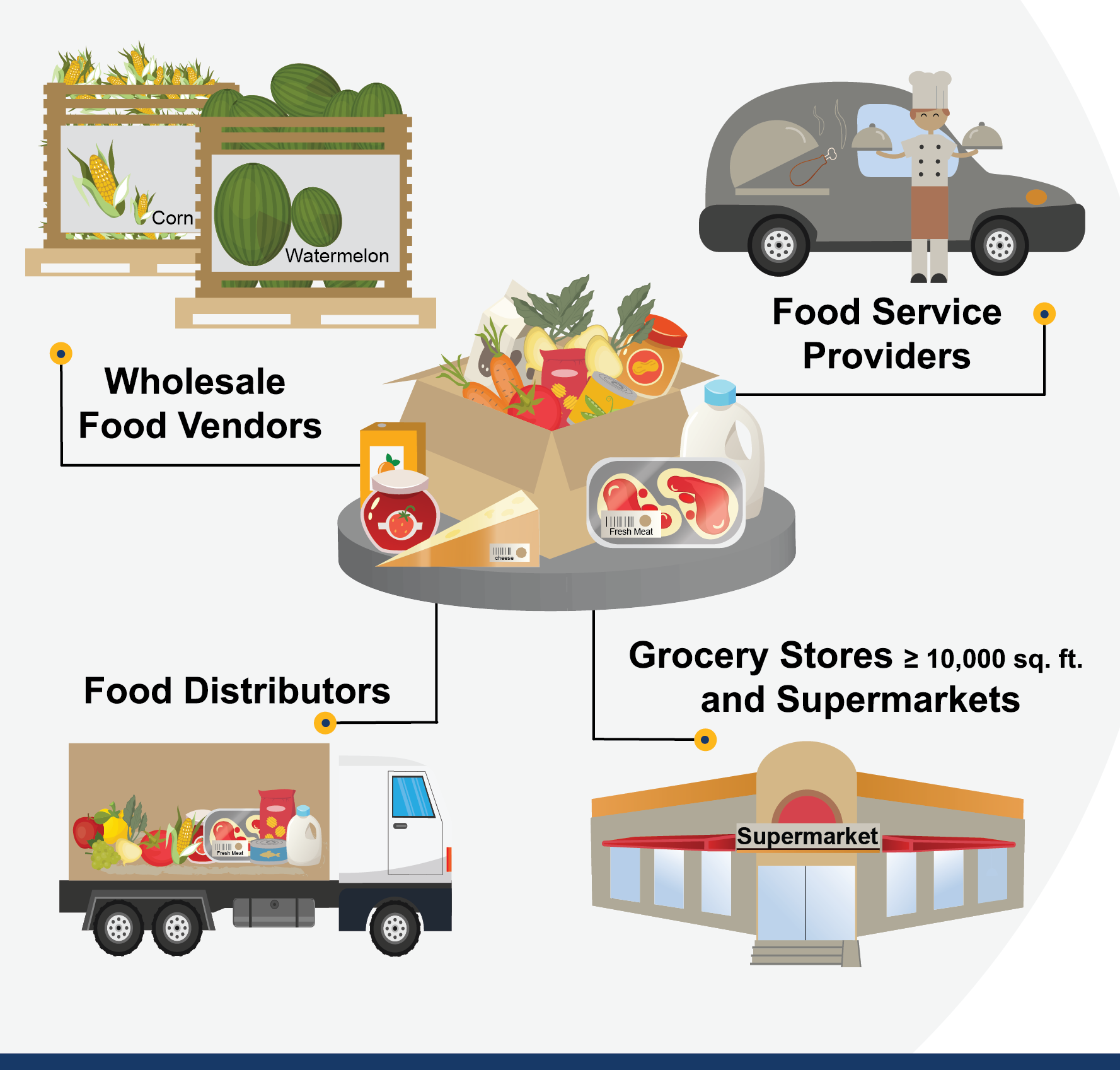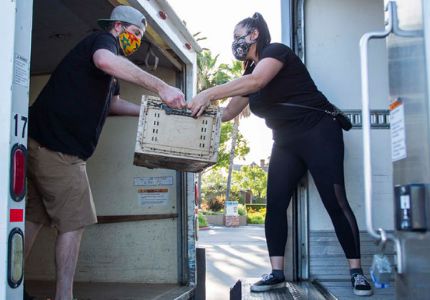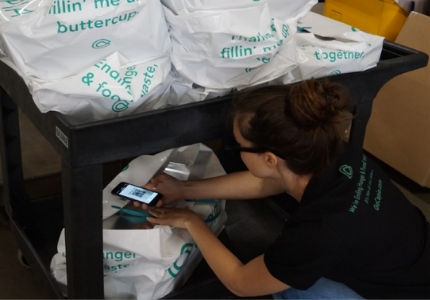Food Donors
Fight Hunger and Combat Climate ChangeSB 1383 requires certain food businesses to donate the maximum amount of edible food they would otherwise dispose, to food recovery organizations.
The law phased food donors in two tiers:
- Tier 1: Businesses that typically have more produce, fresh groceries, and shelf-stable foods to donate.
- Tier 2: Businesses that typically have more prepared foods to donate.
Mandated food donors help their communities by working with local food banks, food pantries, and other food recovery organizations and services.
- Safe Surplus Food Donation Guide PDF download
- California Food Bank Locator Tool
- Model Food Recovery Agreement PDF download (guidance for environmental health departments)

Requirements
Tier 1
Tier 1 businesses typically have more produce, fresh grocery, and shelf-stable foods to donate.

Tier 2
Tier 2 businesses typically have more prepared foods to donate, which often require more careful handling to meet food safety requirements (e.g., time and temperature controls).

Establishing Contracts and Written Agreements with Food Recovery Organizations and Services
The law requires mandated food donors to donate the maximum amount of their edible food that would otherwise be disposed of. To ensure this happens, mandated food donors are required to establish contracts or written agreements with food recovery organizations or services.
Food recovery organizations and services vary in the amount and types of food they can receive, so mandated food donors may need to establish contracts or written agreements with multiple food recovery organizations and services to comply.

Example:
A food distributor may have a thousand pounds of tomatoes to donate. A food bank may be able to distribute large loads among multiple food pantries throughout a city to distribute to those in need, but a small soup kitchen may not have the facility or resources to transform so many tomatoes into soup or sauce to serve.

Recordkeeping
The law requires mandated food donors to maintain records of their food donation activities.
Jurisdictions will monitor compliance by requesting the following types of records during inspections:
- Contract or written agreement information with food recovery organizations and services.
- Schedules for food donation deliveries or collections.
- Quantity of food donated in pounds per month for each food recovery organization or service they donate to.
- Types of food that each food recovery organization and service receives or collects from the donor.
Model Recordkeeping Tool: CalRecycle has developed a model recordkeeping tool to help ensure compliance with recordkeeping requirements. The use of this tool is optional.
Disclaimer: The use of the aforementioned resources or tools is optional. Reference herein to any specific resource, process, service, or tool by trade name, trademark, or otherwise, does not constitute or imply its endorsement, recommendation, or favoring by the State of California or CalRecycle.
For more information contact: Short-Lived Climate Pollutants (SLCP), Organic Waste Methane Emissions Reductions, SLCP.Organics@calrecycle.ca.gov
